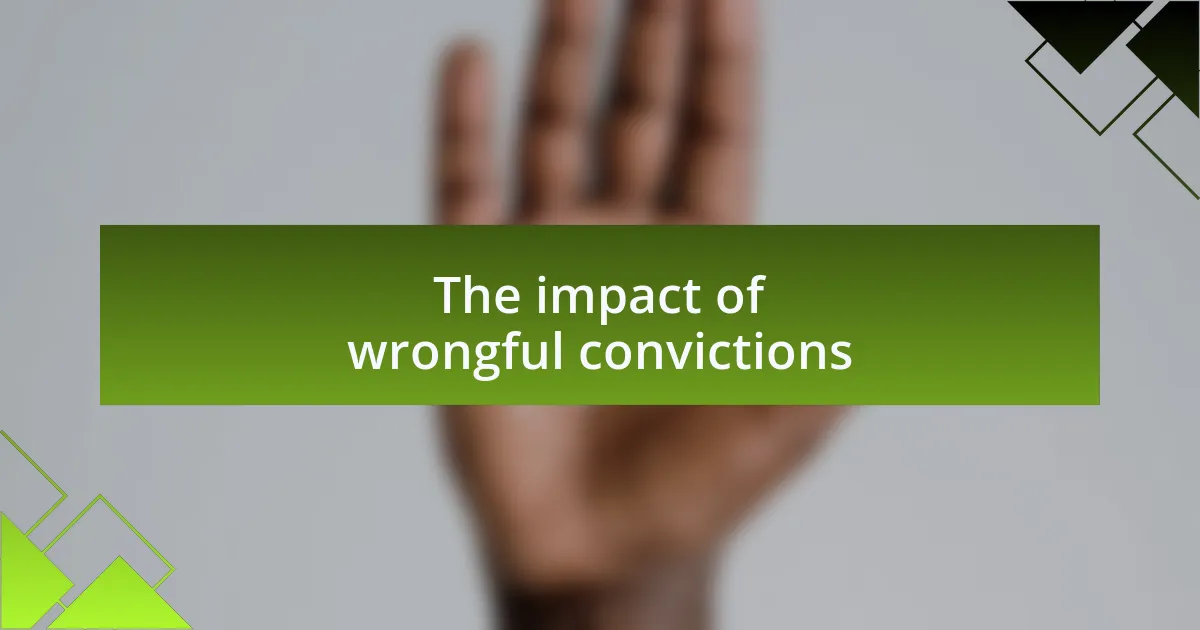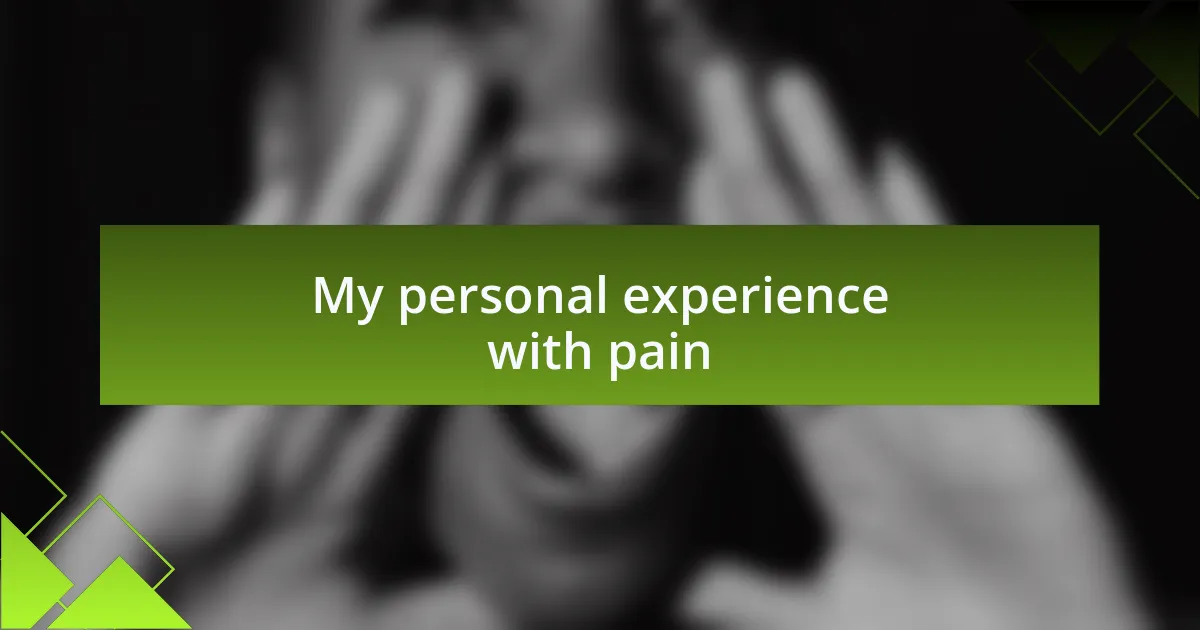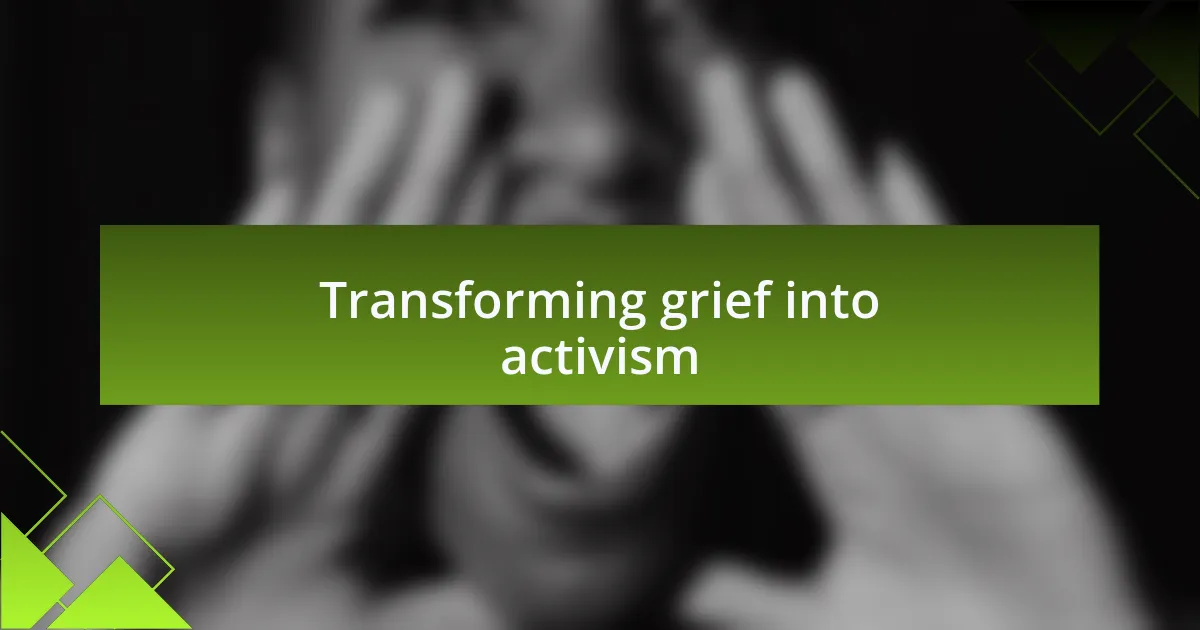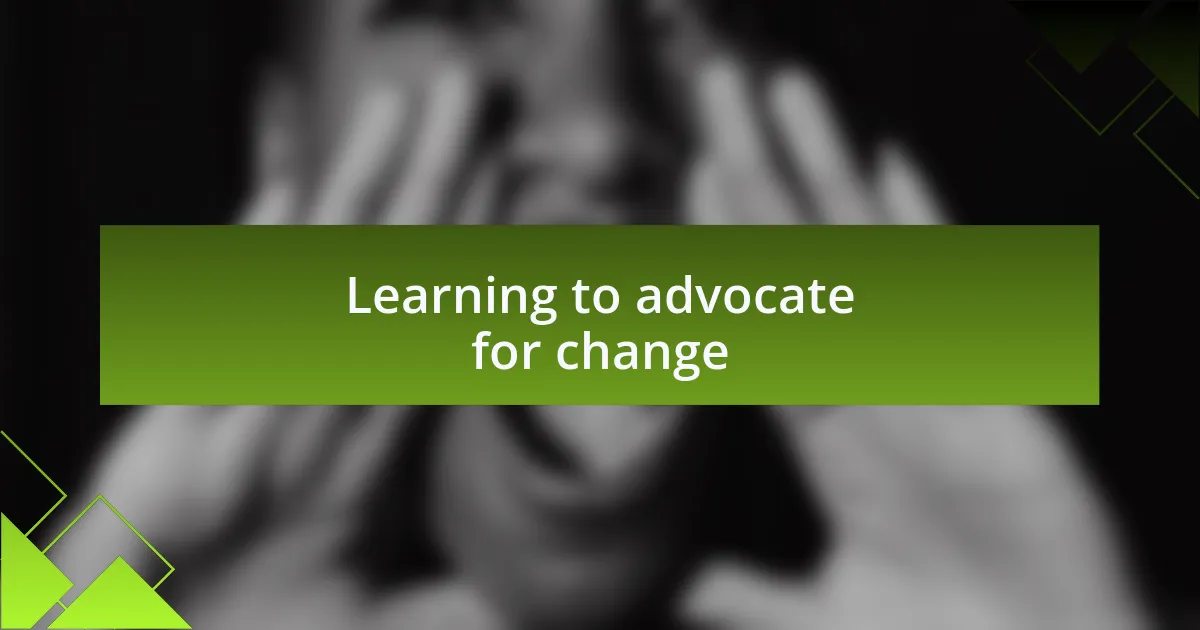Key takeaways:
- The anti-death penalty movement emphasizes the inherent value of human life and the flaws in the justice system, particularly concerning wrongful convictions.
- Wrongful convictions create profound emotional and financial impacts on individuals and communities, fostering distrust in the justice system.
- Personal experiences of pain can drive individuals to transform grief into activism, uniting them in a collective call for justice.
- Effective advocacy involves personal reflection, education, and engaging with stories that resonate with others to raise awareness and promote change.

Understanding the anti-death penalty movement
The anti-death penalty movement is rooted in the belief that every human life has inherent value, regardless of the actions committed. I remember attending a rally where a speaker shared their experience of losing a loved one to violence; they emphasized that vengeance would not bring healing but perpetuate a cycle of pain. How do we reconcile our desire for justice with the possibility of wrongful convictions?
At its core, this movement challenges the notion that capital punishment serves as a deterrent to crime. Research consistently shows that states with the death penalty do not have significantly lower crime rates than those without. This revelation leads me to wonder: if the ultimate punishment doesn’t enhance public safety, what purpose does it truly serve?
Many activists have personal stories that drive their commitment to abolishing the death penalty. I once met a former inmate who had narrowly escaped execution after being wrongfully convicted. His story illuminated the devastating flaws within the justice system and left me questioning how many more lives hang in the balance. How can we support a system that risks irreparable harm to innocent individuals?

The impact of wrongful convictions
Wrongful convictions have profound and lasting impacts on individuals, their families, and society at large. I recall speaking with a mother who spent years lobbying for justice after her son was exonerated; she described the emotional turmoil of watching an innocent life wasted behind bars, all while knowing the truth. How can we quantify the heartache and lost years that come with such a grave injustice?
The ripple effects extend beyond the wrongfully convicted. Communities bear the weight of these miscarriages of justice, often fueling distrust in a system meant to protect them. This distrust can create a cycle where citizens feel alienated and less likely to cooperate with law enforcement. Isn’t it ironic that the very tools designed to uphold safety instead fracture the bond between communities and those meant to serve them?
Moreover, the financial toll of wrongful convictions is staggering. It costs taxpayers millions for wrongful incarcerations, not to mention the court fees and resources tied up in flawed cases. It makes me wonder: wouldn’t those funds be better spent on education or community support rather than rectifying the mistakes of a broken system?

My personal experience with pain
The pain I’ve felt through my own experiences is deeply rooted. I remember sitting alone in a quiet room, grappling with the enormity of my emotions after a close friend was wrongfully convicted. The weight of my helplessness was crushing; I often asked myself how someone I loved could be trapped by a flawed system, and it left me feeling utterly powerless.
In those moments, I discovered that pain has a transformative quality. There was one particular night when I found myself scribbling thoughts in a journal, trying to make sense of the turmoil around me. Each word I wrote felt like a cathartic release, a small step toward turning anguish into action. I learned that confronting our pain can ignite a spark—will I allow this experience to define me, or can I shape it into something meaningful?
As I navigated these emotions, I realized that community support became my lifeline. Sharing stories with others who had faced similar injustices provided solace. Have you ever experienced a burden that felt lighter simply by vocalizing it? In those exchanges, I found strength not just for myself but also for a collective purpose; together, we could challenge the very foundations of a system that had caused us so much pain.

Transforming grief into activism
Transforming grief into activism begins with an understanding that our emotional pain can fuel meaningful change. I still vividly remember the day I attended my first rally against the death penalty, my heart heavy but resolute. Holding a sign emblazoned with my friend’s name felt like a powerful way to honor their memory, amplifying their voice and shining a light on the injustice they faced.
As I spoke to others at the event, I felt the overwhelming connection between our collective grief and our shared resolve. It’s as if we were all standing together in a circle of solidarity, each story of loss binding us more tightly. Have you ever felt that surge of courage when you realized you’re not alone in your fight? For me, it was a profound moment, transforming individual sorrow into a communal call for justice.
These experiences fueled my desire to advocate passionately for reform. I often found myself delving deeper into the narratives of others unjustly impacted by the legal system. Engaging with their stories not only deepened my empathy but also ignited a fire within me—an unshakeable commitment to channeling grief into activism. It begs the question: how can we turn our pain into a force for change, inspiring others to join us on this journey?

Learning to advocate for change
Learning to advocate for change requires a blend of personal reflection and public action. I remember one afternoon when I decided to reach out to a local advocacy group. They were organizing a campaign to raise awareness about wrongful convictions, and I felt a spark of determination. Have you ever found yourself in a moment where you knew you had to act, but weren’t sure how? That was me, grappling with my own uncertainty while driven by the memories of those who suffered unjustly.
As I attended workshops and met others passionate about reform, I began to grasp the power of my voice. Each conversation unveiled new perspectives and strategies that pointed toward hope. One woman shared her story of loss, and as I listened, I could almost feel the weight of her pain. In that moment, I realized that advocacy is not just about facts or statistics; it’s about embracing the stories that connect us and using those narratives to fuel our mission for justice.
Over time, I discovered that effective advocacy thrives on education and empathy. I started engaging in discussions, whether on social media or at community forums, to raise awareness about the death penalty’s flaws. The more I shared my thoughts, the more I felt a sense of purpose washing over me. Have you ever felt that thrill when someone relates to your experience? Those moments underscore the significance of advocacy; they remind us that we are part of a larger movement, united in our quest for change.